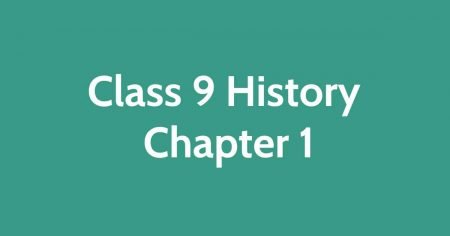NCERT Solutions For Class 8 Chapter 8: Subject experts provide NCERT Solutions for Class 8 Maths Chapter 8 Comparing Quantities, ensuring that they meet the needs of a CBSE Class 8 student. These NCERT Solutions for Class 8 are straight to the point and will not confuse students; instead, they will assist them in reaching a conclusion utilising the best problem-solving strategy. Students will have the opportunity of thoroughly preparing themselves for the final CBSE exams by completing the exercise questions in the NCERT textbook.
Exercise 8.1 Page No: 119
1. Find the ratio of the following:
(a) Speed of a cycle 15 km per hour to the speed of scooter 30 km per hour.
(b) 5 m to 10 km
(c) 50 paise to ₹ 5
Solution:
a) Ratio of the speed of cycle to the speed of scooter = 15/30 = ½ = 1:2
b) Since, 1 km = 1000m
5m/10km = 5m/(10 x 1000)m = 5/10000 = 1/2000 = 1:2000
The required ratio is 1: 2000
c) Since, ₹1 = 100 paise
50 paise/₹5 = 50/(5 x 100) = 50/500 = 1/10 = 1:10
The required ratio is 1: 10
2. Convert the following ratio to percentages
a) 3:4
b) 2:3
Solution:
a) 3:4 = ¾ = ¾ x 100% = 0.75 x 100% = 75%
b) 2:3 = 2/3 = 2/3 x 100% = 0.666 x 100% = 66.66% = 66⅔%
3. 72% of 25 students are good in mathematics. How many are not good in mathematics?
Solution:
It’s given that 72% of 25 students are good in mathematics
So, the percentage of students who are not good in mathematics = (100 – 72)%
= 28%
Here, number of students who are good in mathematics = 72/100 x 25 = 18
Thus, the number of students who are not good in mathematics = 25 – 18
= 7
[Also, 28% of 25 = 28/100 x 25 = 7]
Therefore, 7 students are not good in mathematics.
4. A football team won 10 matches out of the total number of matches they played. If their win percentage was 40, then how many matches did they play in all?
Solution:
Let the total number of matches played by the team be x.
Given that the team won 10 matches and the winning percentage of the team was 40%.
⇒ 40/100 × x = 10
40x = 10 × 100
40x = 1000
x = 1000/40
= 100/4
= 25
Therefore, the team played 25 matches.
5. If Chameli had ₹600 left after spending 75% of her money, how much did she have in the beginning?
Solution:
Let the amount of money which Chameli had in the beginning be x
Given that, after spending 75% of ₹x, she was left with ₹600
So, (100 – 75)% of x = ₹600
Or, 25% of x = ₹600
25/100 × x = ₹600
x = ₹600 × 4
= ₹2400
Therefore, Chameli had ₹2400 is the beginning.
6. If 60% people in city like cricket, 30% like football and the remaining like other games, then what per cent of the people like other games? If the total number of people are 50 lakh, find the exact number who like each type of game.
Solution:
Percentage of people who like other games = (100 – 60 – 30)%
= (100 – 90)%
= 10%
Total number of people = 50 lakhs
So,
Number of people who like cricket = 60/100 x 50 = 30 lakhs
Number of people who like football = 30/100 x 50 = 15 lakhs
Number of people who like other games = 10/100 x 50 = 5 lakhs
Exercise 8.2 Page No: 125
1. A man got a 10% increase in his salary. If his new salary is ₹1,54,000, find his original salary.
Solution:
Let the original salary be x
Given that, the new salary is ₹1,54,000
Original salary + Increment = New salary
Given that the increment is 10% of the original salary
So, (x + 10/100 × x) = 154000
x + x/10 = 154000
11x/10 = 154000
x = 154000 × 10/11
= 140000
Therefore, the original salary was ₹1,40,000.
2. On Sunday 845 people went to the Zoo. On Monday only 169 people went. What is the per cent decrease in the people visiting the zoo on Monday?
Solution:
Given that on Sunday, 845 people went to the zoo and on Monday, 169 people went to the zoo
Decrease in the number of people = 845 – 169 = 676
Thus,
Percentage decrease = (Decrease in the number of people/Number of people who went to zoo on Sunday) x 100%
= (676/845 x 100)%
= 80%
3. A shopkeeper buys 80 articles for ₹ 2,400 and sells them for a profit of 16%. Find the selling price of one article.
Solution:
Given that the shopkeeper buys 80 articles for ₹ 2,400
Cost of one article = 2400/80 = ₹ 30
Profit percentage = 16%
Profit percentage = Profit/C.P x 100
16 = Profit/30 x 100
Profit = (16 x 30)/100
= ₹ 4.8
Therefore, selling price of one article = C.P + Profit
= ₹ (30 + 4.80)
= ₹ 34.80
4. The cost of an article was ₹ 15,500. ₹ 450 were spent on its repairs. If it is sold for a profit of 15%, find the selling price of the article.
Solution:
Total cost of an article = Cost + Overhead expenses
= ₹15500 + ₹450
= ₹15950
Profit percentage = 15%
Profit percentage = Profit/C.P x 100
15 = Profit/15950 x 100
Profit = (15 x 15950)/100
= 2392.50
Therefore, Selling price of the article = C.P + Profit
= ₹(15950 + 2392.50)
= ₹18342.50
5. A VCR and TV were bought for ₹ 8,000 each. The shopkeeper made a loss of 4% on the VCR and a profit of 8% on the TV. Find the gain or loss percent on the whole transaction.
Solution:
C.P. of a VCR = ₹ 8000
The shopkeeper made a loss of 4 % on VCR
This means if C.P. is ₹ 100, then S.P. is ₹ 96. When C.P. is ₹ 8000
S.P. = (96/100 x 8000) = ₹ 7680
C.P. of a TV = ₹ 8000
The shopkeeper made a profit of 8 % on TV.
This means that if C.P. is ₹ 100, then S.P. is ₹ 108.
When C.P. is ₹ 8000,
S.P. = (108/100 x 8000) = ₹ 8640
Total S.P. = ₹ 7680 + ₹ 8640 = ₹ 16320
Total C.P. = ₹ 8000 + ₹ 8000 = ₹ 16000
Since, total S.P.> total C.P. ⇒ profit
Profit = ₹ 16320 − ₹ 16000 = ₹ 320
Therefore, the shopkeeper had a gain of 2% on the whole transaction.
6. During a sale, a shop offered a discount of 10% on the marked prices of all the items. What would a customer have to pay for a pair of jeans marked at ₹ 1450 and two shirts marked at ₹ 850 each?
Solution:
Total marked price = ₹ (1,450 + 2 × 850)
= ₹ (1,450 +1,700)
= ₹ 3,150
Given that, discount percentage = 10%
Discount = ₹ (10/100 x 3150) = ₹ 315
Also, Discount = Marked price − Sale price
₹ 315 = ₹ 3150 − Sale price
∴ Sale price = ₹ (3150 − 315)
= ₹ 2835
Therefore, the customer will have to pay ₹ 2,835.



